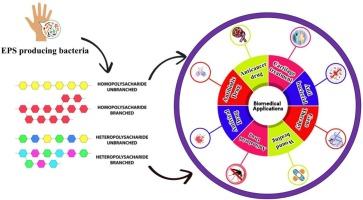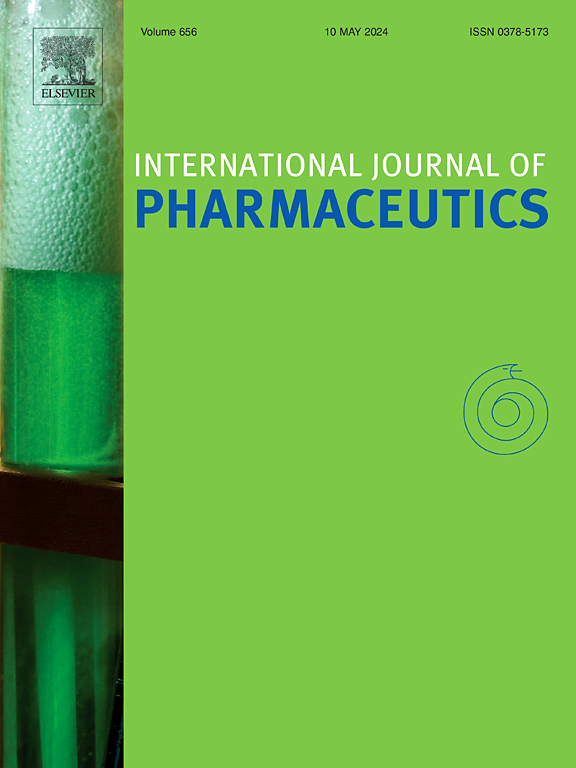Advances in metal nanofabrication using microbial exopolysaccharides: Emerging biomedical applications
IF 5.2
2区 医学
Q1 PHARMACOLOGY & PHARMACY
引用次数: 0
Abstract
Natural polysaccharide-based nanoparticle (NPs) production has been receiving more attention recently. These exopolysaccharides (EPS) are easy to make, harmless, and inexpensive. On the other hand, interest in hydrocolloids and films has grown dramatically, and their use in the food, pharmaceutical, cosmetics and fragrance, paper and textile, and oil industries is highly promising. In light of this, the current chapter goal is to describe a thorough approach for extracting and purifying EPS, one that includes screening, fermentation optimisation, pre-treatment, protein removal, precipitation, and purification. Due to the failure of conventional medical therapy, the evolution of drug resistance against cancer and microbiological diseases poses a serious threat to human wellness. As an alternative to traditional anticancer and antibacterial medicines, the production of numerous metallic (Ag, Au, Zn, and Ti) nanoparticles has gained importance. Exopolysaccharides (EPS) from bacteria are now being touted as a possible biological substrate for the environmentally friendly production of metal nanoparticles. NPs are efficiently reduced and stabilized by the polyanionic functional groups (hydroxyl, carboxylic, sulphate, and phosphate) found in EPS. While used against different types of cancer and pathogenic bacteria, EPS-mediated NPs show a broad variety of anticancer and antimicrobial abilities. Explores the use of bacterial EPS-mediated metal NPs in detail, including EPS extraction, the synthesis of green EPS-mediated NPs, their characterisation, and possible uses as anticancer, and antibacterial drugs. In summary, EPS-fabricated nanoparticles have a number of advantageous qualities that make them desirable for strategies based on nanotechnology and medicine. Their promise as alternatives to current cancer and microbial infection therapies is facilitated by their biocompatibility, biodegradability, non-toxicity, and sustainability, opening the door for fascinating developments in these specific fields.

微生物胞外多糖金属纳米加工的进展:新兴生物医学应用。
近年来,天然多糖基纳米颗粒的生产越来越受到人们的关注。这些胞外多糖(EPS)易于制造,无害且价格低廉。另一方面,人们对水胶体和薄膜的兴趣急剧增长,它们在食品、制药、化妆品和香料、造纸和纺织以及石油工业中的应用非常有前景。鉴于此,本章的目标是描述一种提取和纯化EPS的彻底方法,包括筛选,发酵优化,预处理,蛋白质去除,沉淀和纯化。由于常规药物治疗的失败,对癌症和微生物疾病的耐药性演变对人类健康构成严重威胁。作为传统抗癌和抗菌药物的替代品,大量金属(银、金、锌和钛)纳米颗粒的生产变得越来越重要。来自细菌的外多糖(EPS)现在被吹捧为一种可能的生物底物,用于环保生产金属纳米颗粒。EPS中的聚阴离子官能团(羟基、羧基、硫酸盐和磷酸盐)可以有效地还原和稳定NPs。虽然用于不同类型的癌症和致病菌,但eps介导的NPs显示出广泛的抗癌和抗菌能力。详细探讨了细菌EPS介导的金属NPs的用途,包括EPS的提取、绿色EPS介导的NPs的合成、它们的表征以及作为抗癌和抗菌药物的可能用途。总之,eps制备的纳米颗粒具有许多优点,使其成为基于纳米技术和医学的策略的理想选择。它们的生物相容性、可生物降解性、无毒性和可持续性促进了它们作为当前癌症和微生物感染治疗的替代品的前景,为这些特定领域的迷人发展打开了大门。
本文章由计算机程序翻译,如有差异,请以英文原文为准。
求助全文
约1分钟内获得全文
求助全文
来源期刊
CiteScore
10.70
自引率
8.60%
发文量
951
审稿时长
72 days
期刊介绍:
The International Journal of Pharmaceutics is the third most cited journal in the "Pharmacy & Pharmacology" category out of 366 journals, being the true home for pharmaceutical scientists concerned with the physical, chemical and biological properties of devices and delivery systems for drugs, vaccines and biologicals, including their design, manufacture and evaluation. This includes evaluation of the properties of drugs, excipients such as surfactants and polymers and novel materials. The journal has special sections on pharmaceutical nanotechnology and personalized medicines, and publishes research papers, reviews, commentaries and letters to the editor as well as special issues.

 求助内容:
求助内容: 应助结果提醒方式:
应助结果提醒方式:


